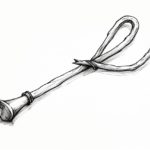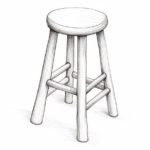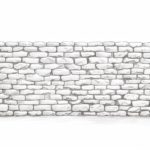Welcome to this step-by-step tutorial on how to draw a column! Whether you are an aspiring artist or simply looking to enhance your drawing skills, this guide will provide you with clear instructions to create a realistic and visually appealing column. Columns are architectural elements that can add a touch of elegance and sophistication to any artwork. So, let’s grab our drawing materials and get started!
Materials Required
Before we dive into the drawing process, let’s gather the necessary materials:
- Drawing paper: Choose a high-quality paper that is suitable for your preferred drawing medium, such as pencil or charcoal.
- Pencils: Have a range of graphite pencils with different hardness levels, such as 2B, 4B, and 6B.
- Eraser: Make sure to have a kneaded eraser for precise corrections.
- Ruler: Use a straight ruler or a T-square to maintain straight lines.
- Compass: If you want to draw perfect circles, a compass will come in handy.
Now that we have our materials ready, let’s begin the process of drawing a column!
Step 1: Outline the Base
Start by drawing a horizontal line across the center of your paper. This line will serve as the baseline for your column. Next, draw two vertical lines on either end of the baseline, extending downwards. These lines will represent the sides of the column’s base.
Step 2: Add Depth to the Base
To create depth, draw two more vertical lines parallel to the ones you just drew. These lines should be slightly shorter in length. Connect the top ends of these lines with horizontal lines, forming a rectangular shape. This shape represents the top surface of the base of the column.
Step 3: Draw the Shaft
Extend two vertical lines upwards from each corner of the rectangular shape you just drew. These lines will form the sides of the column’s shaft. Make sure the lines are parallel and evenly spaced.
Step 4: Add Details to the Shaft
To make the column more visually interesting, add fluting details to the shaft. Draw vertical lines across the length of the shaft, evenly spaced apart. These lines should be parallel to the sides of the column.
Step 5: Define the Capital
At the top of the shaft, draw a horizontal line to define the capital of the column. This line should be slightly longer than the width of the column’s shaft.
Step 6: Create the Entablature
Draw two horizontal lines parallel to the baseline, just above the capital. These lines will serve as the top and bottom surfaces of the entablature, which is the upper part of the column.
Step 7: Add Details to the Entablature
To make the entablature more visually appealing, draw additional architectural details such as friezes or moldings. These details can be added based on your personal preference or reference images of columns.
Step 8: Refine and Erase Guidelines
Review your drawing and use an eraser to gently remove any unnecessary guidelines or construction lines. This will give your column a clean and polished appearance.
Conclusion
Congratulations! You have successfully learned how to draw a column. Columns are essential architectural elements that have been used throughout history, and by mastering this skill, you can incorporate them into your artwork or designs. Remember to take your time, practice, and experiment with different styles and techniques to create unique and captivating columns. Happy drawing!









